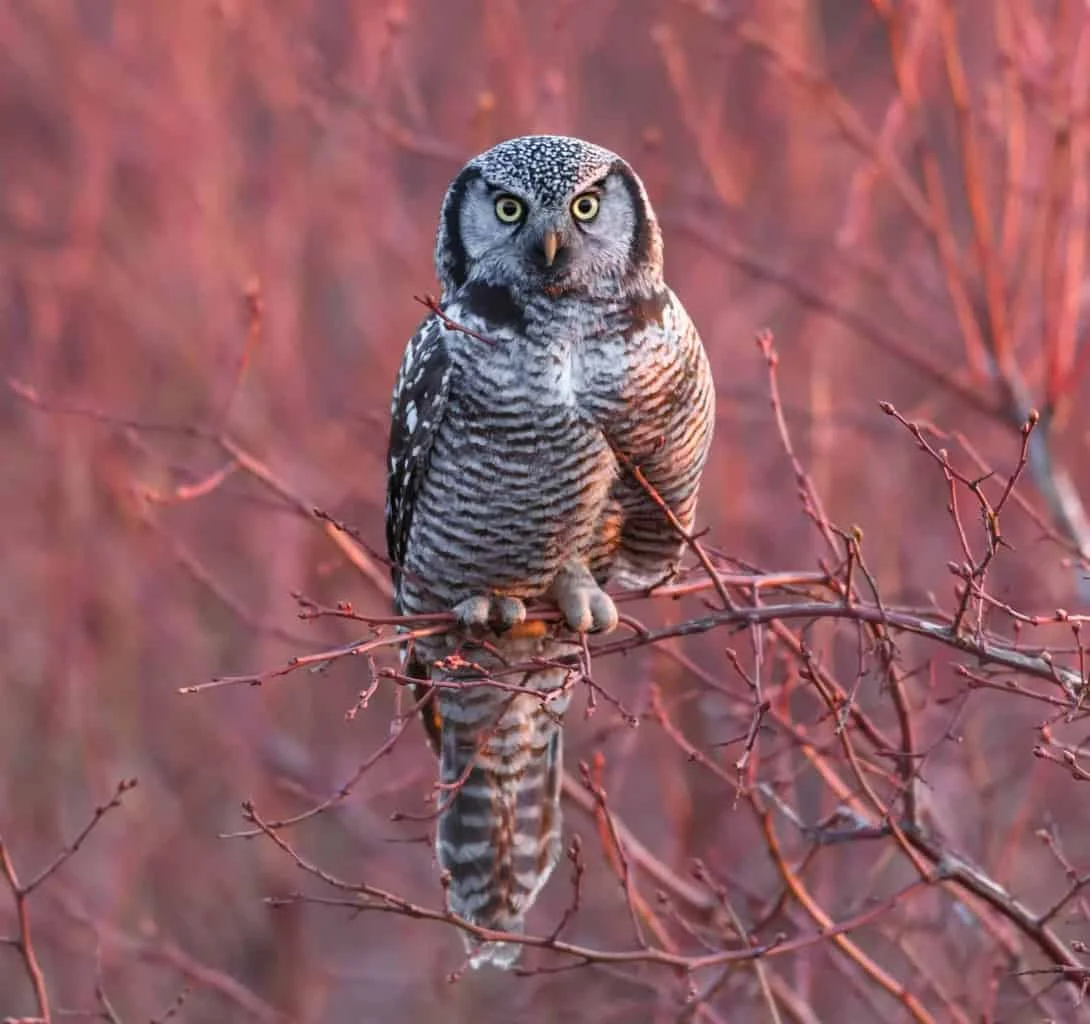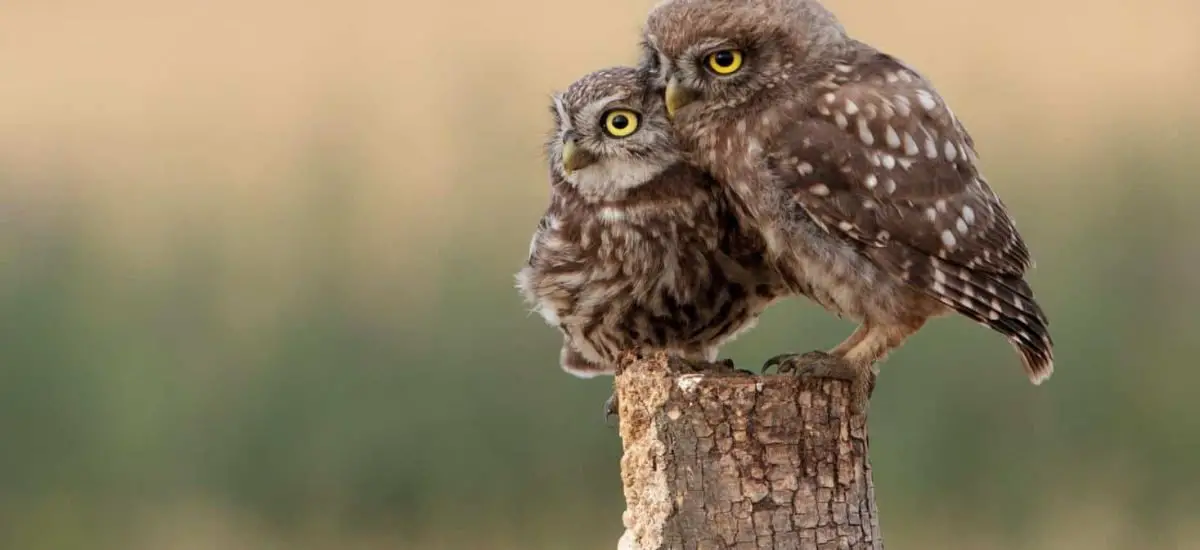
Want to learn more? This National Geographic Book on Owls is a great read!
Most of these owls are quite abundant in the state and benefit from the large swampland areas Louisiana offers.
The state of Louisiana has a subtropical climate meaning that the state has only mild winters but very hot and humid summers.
There are 21 different dedicated state parks in Louisiana and only 5 different National Parks that have been officially recognised.
One of these national parks is shared with bordering state Mississippi. Now, let’s have a look at the different owl species that can be seen in the state in some closer detail.
Want to attract Owls to your yard? Take a look at our article!
What Owls can be seen in Louisiana?
Table of Contents
1. Barn Owl
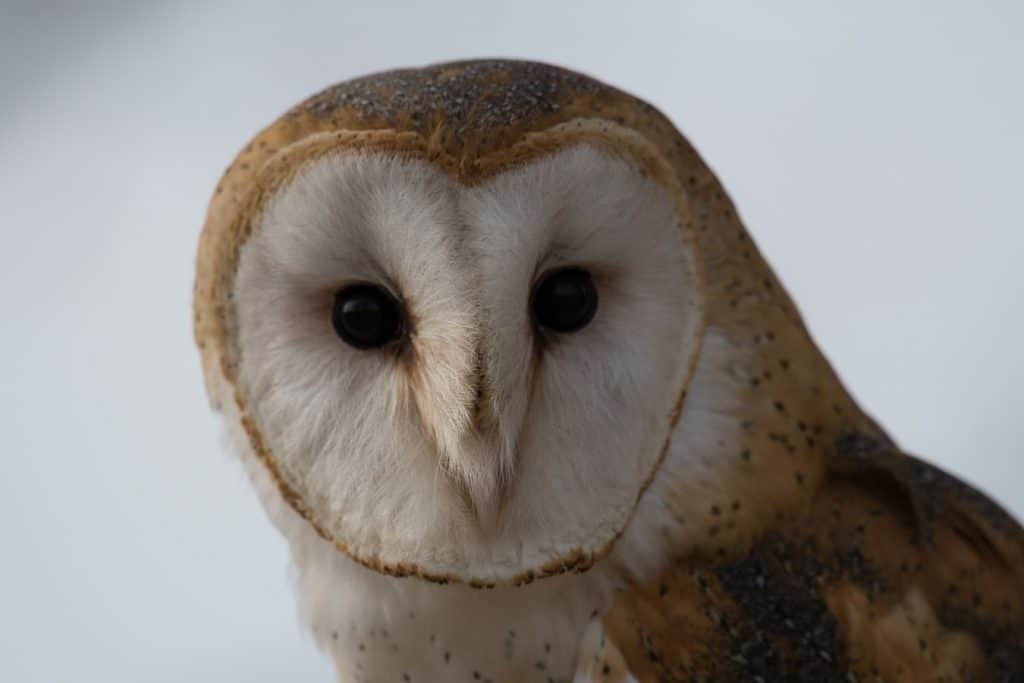
Wingspan
107 to 110 cm
Weight
430 – 620 g
Life Expectancy
Up to 4 years
Diet
Voles, Shrews & Mice
Barn Owls are covered in pale feathers in a colour mix of buff and grey on both their head and their wings.
In clear light of day these colours are very noticeable whilst in night and certain dim lights they can appear to be completely white.
These medium sized owls can be found across 48 states in America and will occasionally stray into southern Canada.
They make their nests and territories in open country areas such as grasslands, however as the name suggests they are happy to make their nests near farmlands and barns.
Whilst there have been reports of barn owls mating with several females, most of them remain monogamous and form long-lasting breeding pairs.
Males will bring food to the females as she gets the nest ready for incubation. These birds are protective of their nests, but they happily share hunting grounds with others of their species.
Barn owls are, not surprisingly, found in all regions of Louisiana with their wide range.
They are also permanent residents meaning that they can be seen throughout all months of the year.
Most of the recorded sightings of this bird have been around the southern border of the state.
2. Eastern Screech Owl
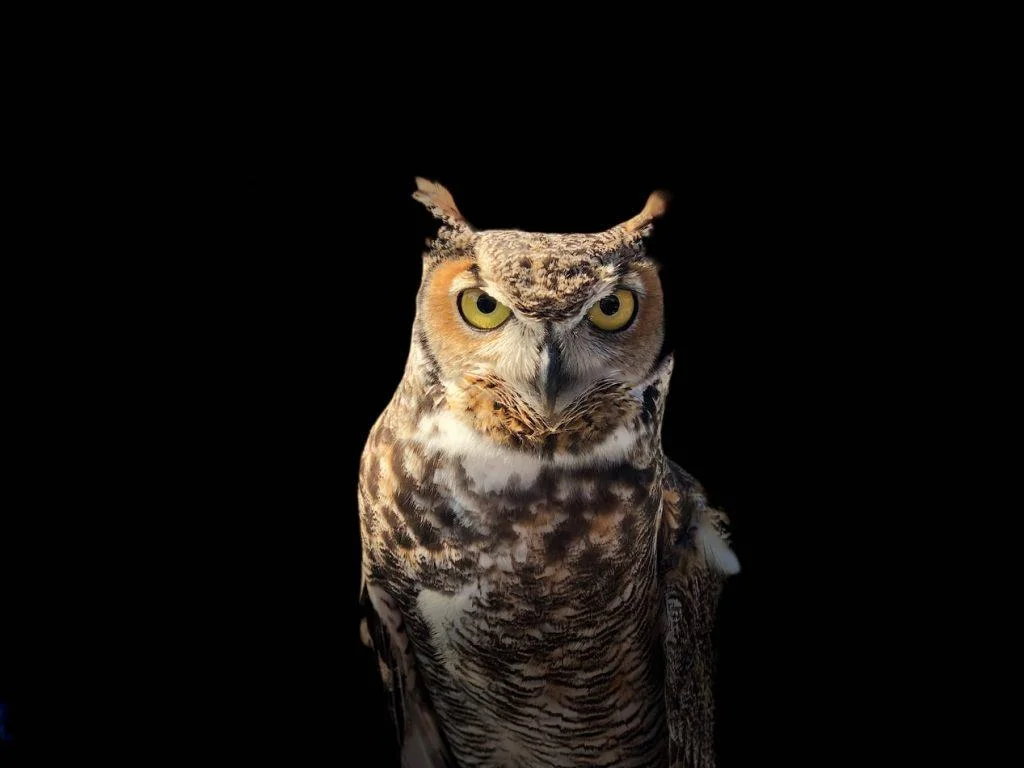
Wingspan
46 to 61 cm
Weight
160 g
Life Expectancy
14 years
Diet
Rats, Squirrels, Rabbits & Skunks
These birds are covered in grey feathers and their body shape is short and stocky.
They have their name because they are only found in the eastern states whilst the Western Screech Owl is seen to the west of the United States.
Eastern Screech-Owls will form breeding pairs and will help raise young together, however these pairs are not long term. The majority of these owls are monogamous but sometimes a male will mate with two females.
Males do most of the work when defending their small territories and will also feed females and their young when they first hatch.
These owls make their habitats in dense forests and utilise any man-made bird boxes that have been added to their territory. They have also been known to nest and breed successfully in city parks and farmlands.
Louisiana is one of the states in which this owl can be seen in all regions. This bird is a year-round resident of the state and there is a very concentrated amount of sightings of this owl in the south west of the state.
3. Great Horned Owl

Wingspan
~140cm
Weight
1.4 kg
Life Expectancy
28 years old
Diet
Squirrels, Rabbits & Skunks
This owl’s most identifiable feature is its pointed ear tufts that look like horns on top of their heads, which is also where they get their name.
These grey and brown feathered owls are one of the most common and abundant owl species to be seen across North America.
These birds form long term breeding pairs, the breeding pairs have been known to stay with each other outside of the breeding season. They are also very territorial and continue to remain monogamous to their partner in breeding seasons.
These owls have a series of hoots that they will use to defend their territory and both members of the breeding pair will help defend their nests.
In fact, these birds are so territorial that they have at times been known to kill other individuals of their own species as well as different bird species.
They are often harassed by other species of birds such as crows which will call and peck at them to try and get them to abandon the area and their eggs.
It is no surprise that the Great horned Owl can be seen throughout all regions of Louisiana and can spotted during all seasons of the year.
The sightings of this owl have been most highly recorded in the southern areas of the state.
4. Northern Saw-Whet Owl
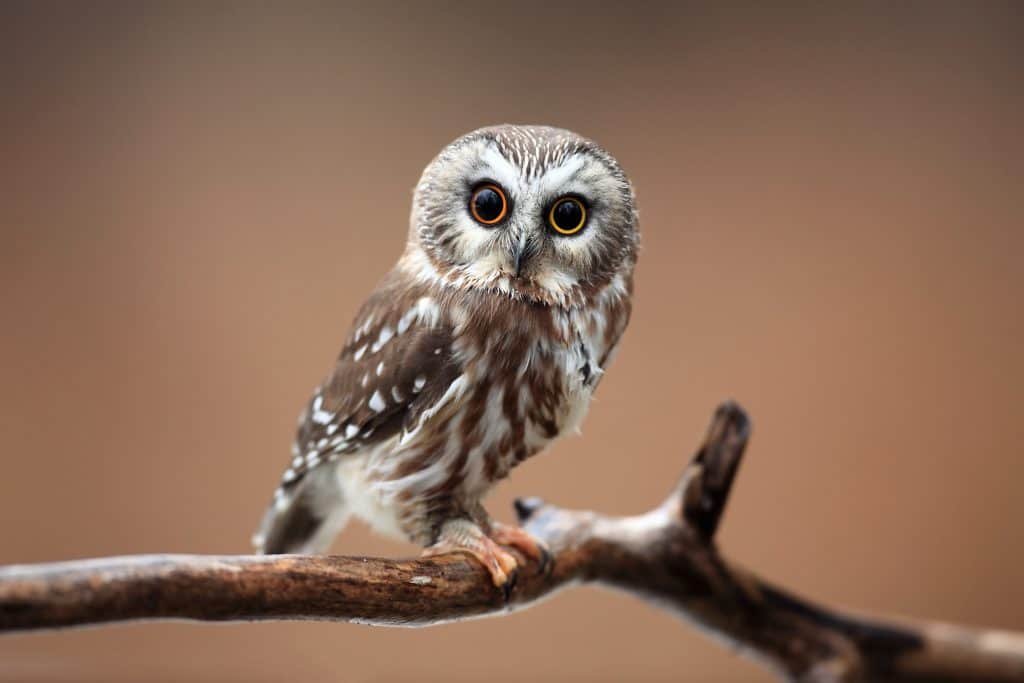
Wingspan
40 - 60 cm
Weight
100 g
Life Expectancy
7 years
Diet
Small birds, young squirrels, voles & shrews
The Northern Saw-Whet Owl is a very small species of owl, they are known for their big round head and wide orange eyes.
They have pale underbellies and their backs and wings are covered in brown feathers.
Despite being tiny owls, they have a very large range and will almost always nest in dense forests, they seem to prefer staying in mature forests if they are able to.
They nest in denser forests during both the winter seasons and breeding seasons. The monogamy of this owl can depend on prey abundance.
Whilst most males are completely monogamous, in seasons of high prey abundance, some males have been known to mate with another individual.
This is the only thing that seems to affect the number of mates. These breeding pairs are not long lasting as they will mate with new individuals in each subsequent breeding season.
Because of their small size, these owls are also often preyed on by a variety of larger owl species, including several that we have previously looked at in this article.
Much like the short and long-eared owls, these birds are only found in Louisiana outside of their breeding seasons.
They have only been seen in the south eastern areas of the state and all-round sightings are quite scarce.
5. Short-Eared Owl
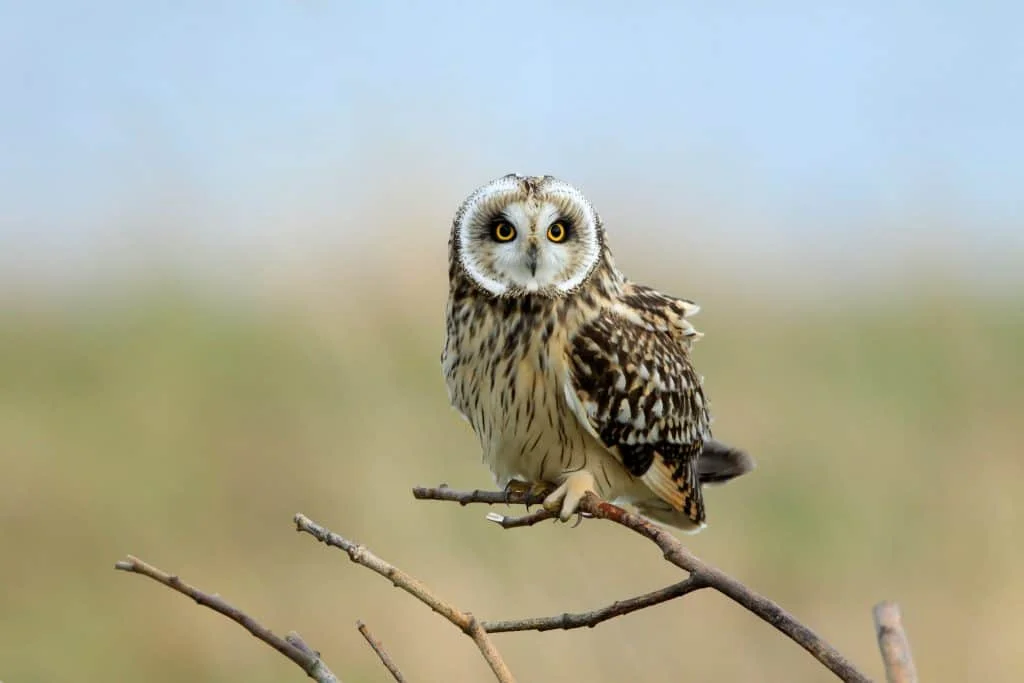
Wingspan
85 to 110 cm
Weight
206–475 g
Life Expectancy
4-12 years
Diet
Voles, Mice, Squirrels
Short-eared owls are a medium sized species of owl that are covered in brown and white spotted feathers.
Their name comes from the fact that they have outwards ear-tufts that are so small that they are barely visible.
Because of their feather pattern they are sometimes confused with the Spotted Owl.
These owls will hunt during both the day and the night and you are most likely to see one in areas of low vegetation.
Short-eared owls form loose colonies and are monogamous maters during the breeding season, but it is unknown as to whether the pairings that they form are long term.
Breeding pairs will make their roosts on the ground in areas of tall grass, they only tend to roost in trees during the winter months especially when it is snowy.
Males will feed the females whilst they are incubating the eggs and will also help defend their territory with a series of harsh calls.
This owl has a very wide range and can be seen in all regions of Louisiana. However, they are not permanent residents in the state and can only be seen in Louisiana outside of their breeding seasons. Most of the sightings have been in the western half of the state.
6. Long Eared Owl
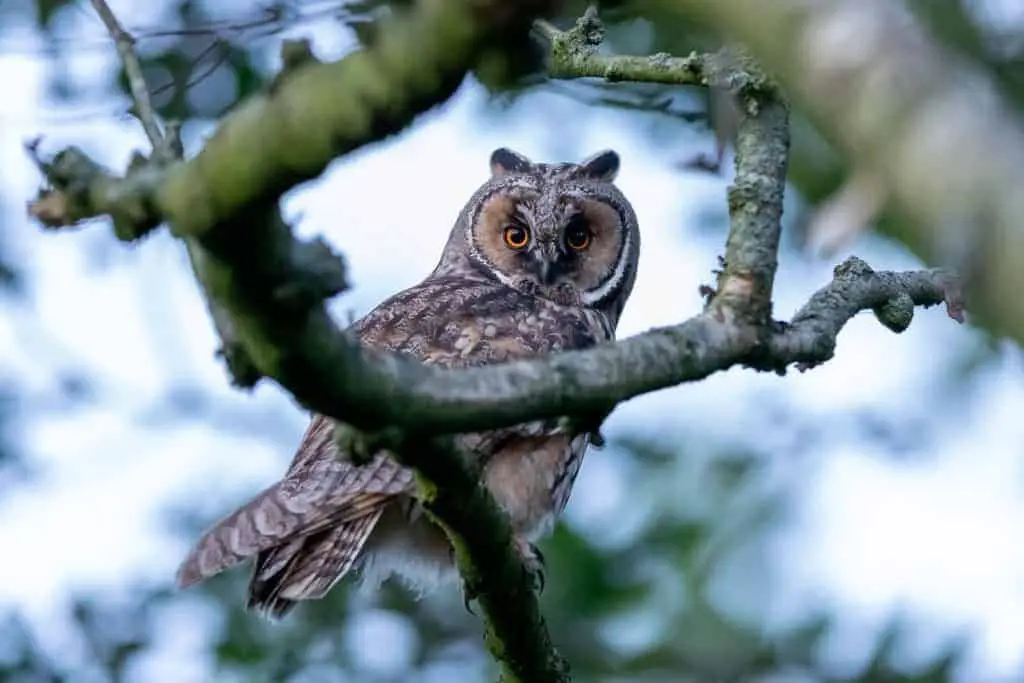
Wingspan
90 to 100cm
Weight
250 g
Life Expectancy
4 years
Diet
Small mammals, mice, rats & rabbits
It is not surprising that these owls get their name from their long, pointed ear tufts, their range and behaviours are very similar to the Short-eared Owl.
These medium sized owls have orange faces and dark feathered bodies. The habitat of this owl varies, they can be found in both open grasslands and coniferous woodlands.
These birds have been known to form loosely structured colonies that whilst they don’t roost together, will usually stay within about 50ft of one another.
Outside of the breeding seasons the size of this colony will increase, sometimes reaching a number of 100 individuals.
Males remain monogamous and begin courting a female during the late winter, before the colonies are fully formed.
There is speculation as to whether these breeding pairs are long-term or if a male will mate with a different individual from the colony in subsequent seasons.
These owls can be seen throughout all of Louisiana, but they are only seen outside of their breeding seasons and in the southern regions the sightings are more scarce.
And they have only been sighted in the north of the state.
7. Burrowing Owl
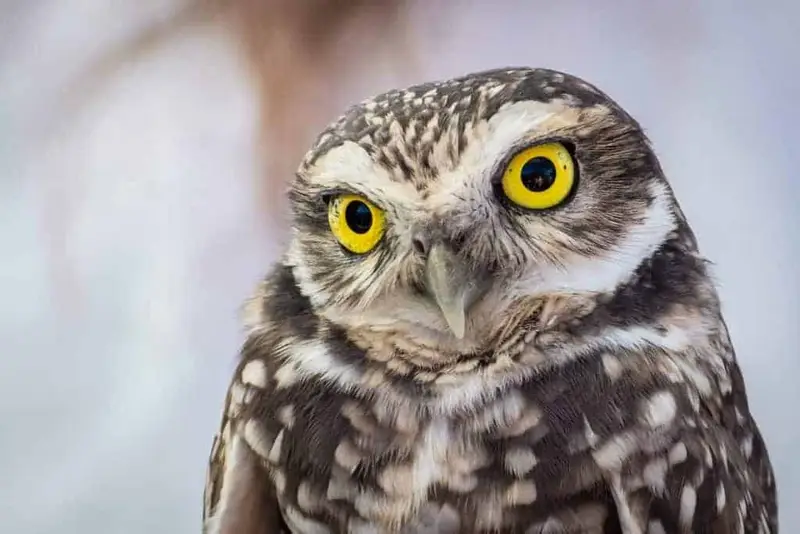
Wingspan
51-61 cm
Weight
140-240 g
Life Expectancy
10 years
Diet
Large Insects and Small Rodents
This small species of owl has brown and white feathers, with the white feathers sometimes forming a large patch of white on their bellies.
Burrowing Owls form loose colonies with a large number of individuals, and they stay together during the breeding seasons.
Outside of the breeding seasons, these colonies can reach numbers of 100 individuals.
Whilst it is not known whether they form long term breeding pairs, it is known that they remain monogamous during the mating season.
After courtship, females stay in the burrow to protect the eggs whilst males defend the territory using their unique calls and wing displays.
As you may expect, these birds do burrow and stay on field grounds, particularly in the mating season.
These birds hunt over open areas of grasslands and have been observed hunting during the day and the night.
Burrowing Owls can only be seen in the state of Louisiana outside of their breeding seasons and their range only extends to the south of the state.
Most of the sightings of this owl have been in the south eastern areas of the state.
8. Barred Owl
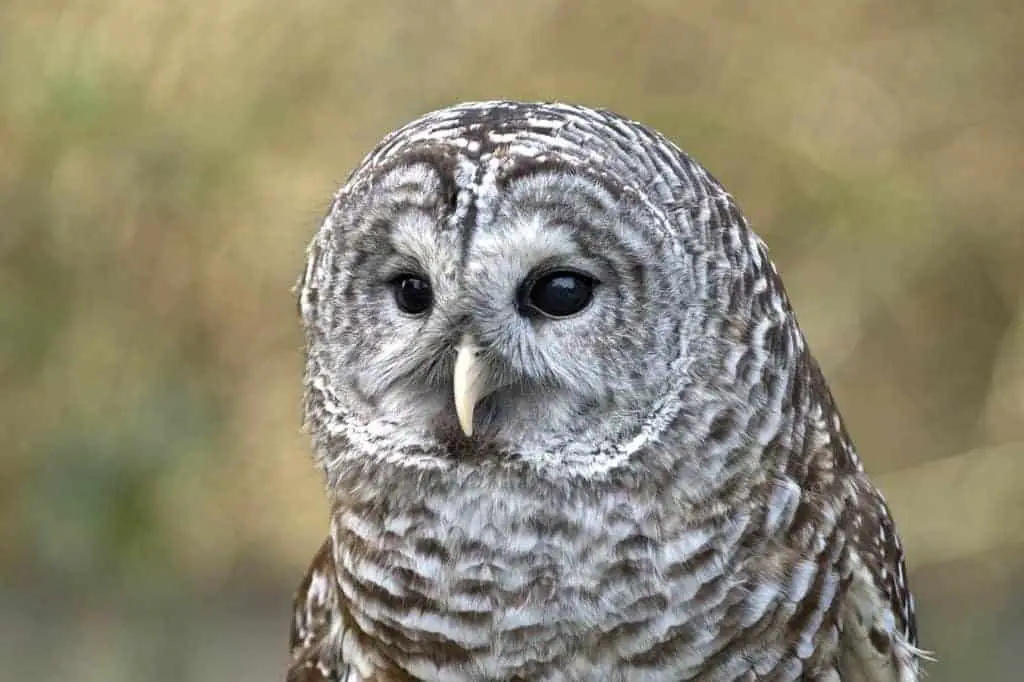
Wingspan
96-125 cm
Weight
468-1,150 g
Life Expectancy
10-23 years
Diet
Small mammals
Barred Owls are covered with brown and white feathers which create a barred pattern over their stocky bodies.
These owls habituate close to bodies of water and swampland areas and make their habitats in areas of dense and mature forests, where they are able.
Barred Owls are very territorial, and females are the more aggressive ones, however this is only during the breeding season, but they will remain defensive throughout the rest of the year.
To defend their territory, they have an attack in which they fly, talons first, and collide with another individual.
These birds are monogamous and are believed to mate for life.
They will raise a single brood of eggs together and if there is a predator, one parent will leave the nest to cause a noisy distraction and prevent the young from being attacked.
These birds are year-round residents in the state of Louisiana. They can be seen in all regions of the state but the western border is the extent of their range.
This means that most of the recorded sightings of this bird have been in the south east of the state.

More Articles.
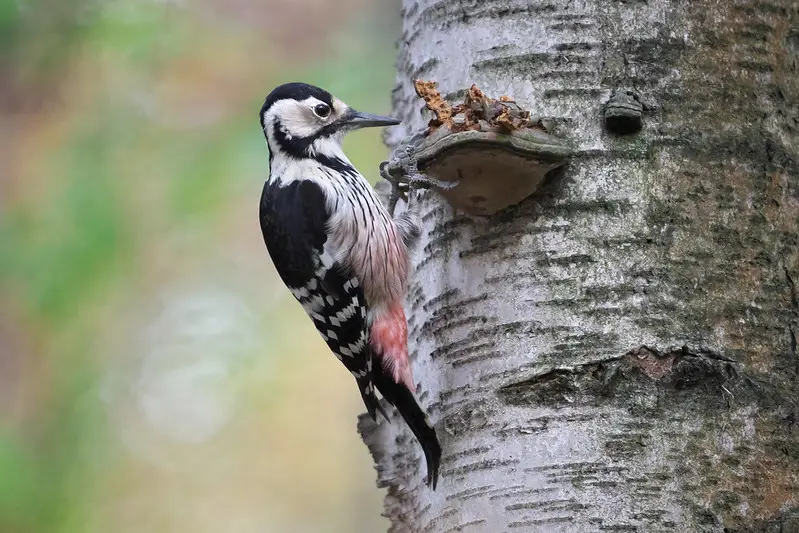
What Woodpeckers can you see in Germany? (8 Species with Pictures & Sounds)
What woodpeckers can you see in Germany? There are 8 different species of woodpecker that
How to Attract Cardinals to Your Backyard: 7 Proven Tips
Attracting cardinals to your backyard is simple when you focus on their needs: food, water,

About Us
We are avid bird-watchers who recently retired, allowing us more time to travel the world. Fortunately, we have managed to visit numerous countries around Europe, Asia, and America. Watching and photographing birds has been a passion for many years and we are making the most of the extra time on our hands!

